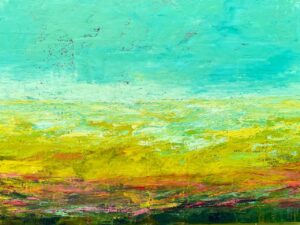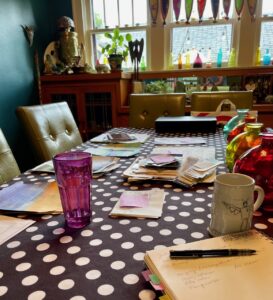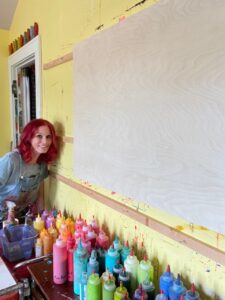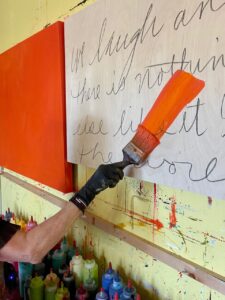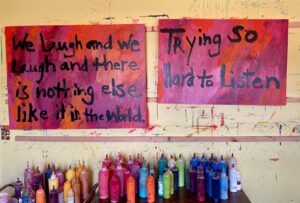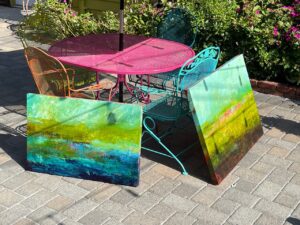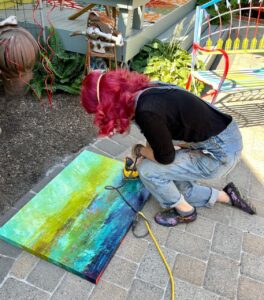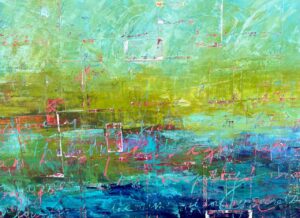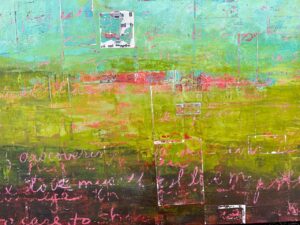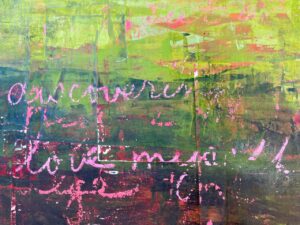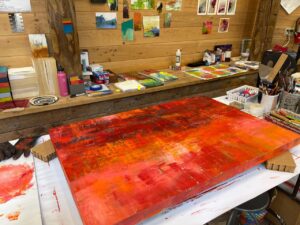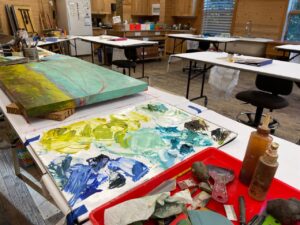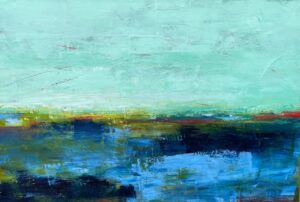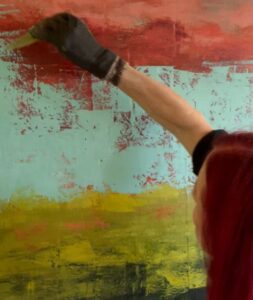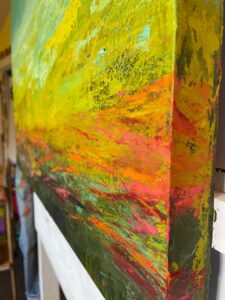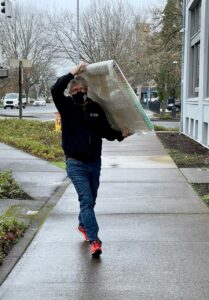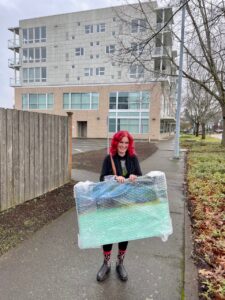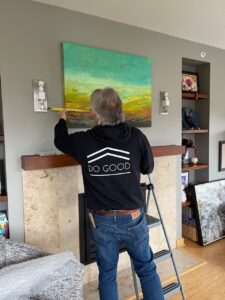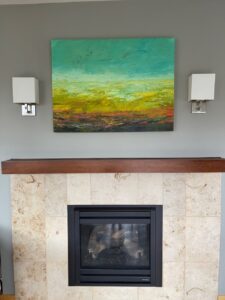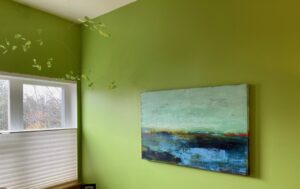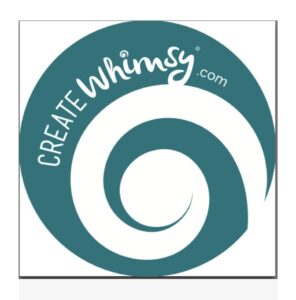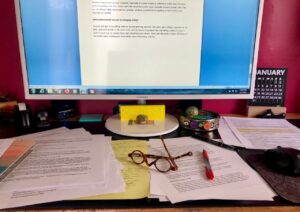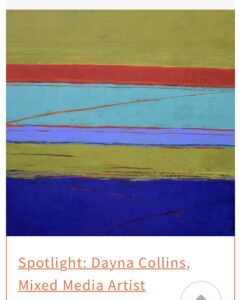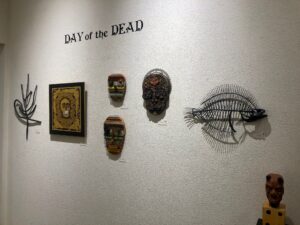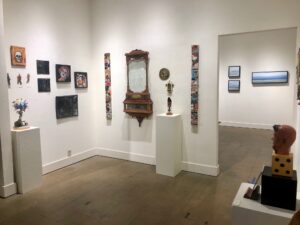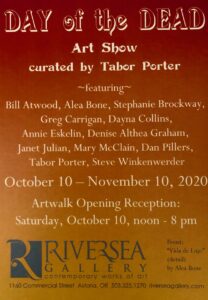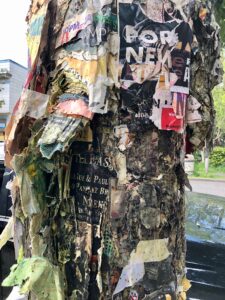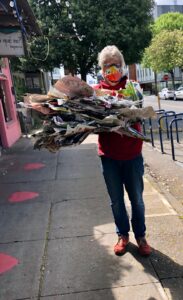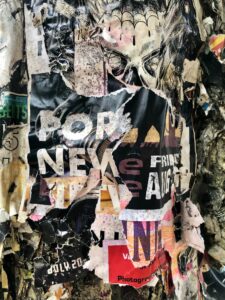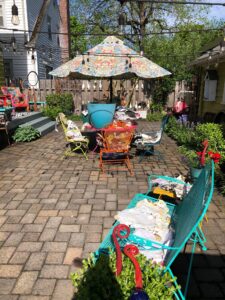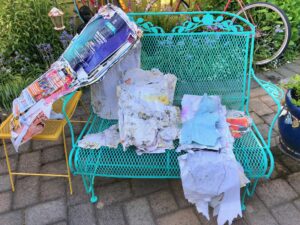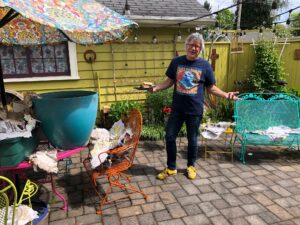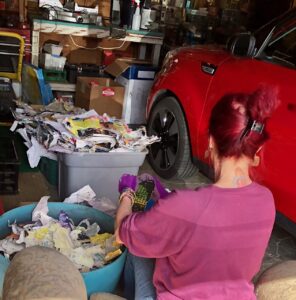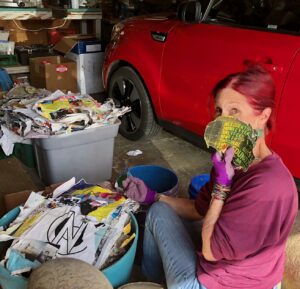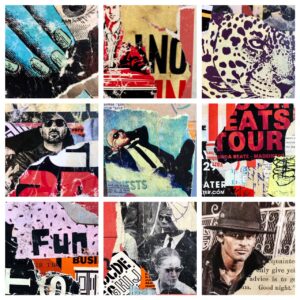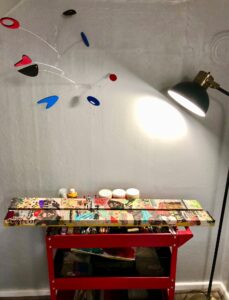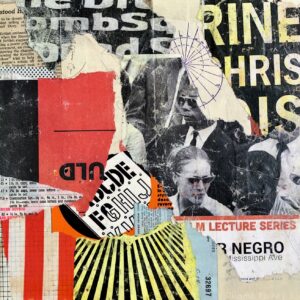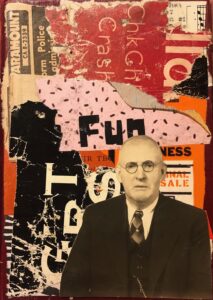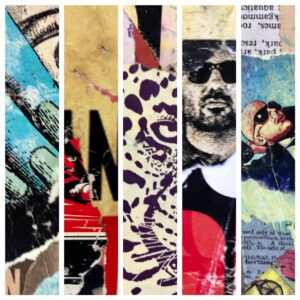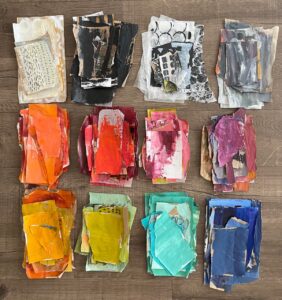
The marriage of paint and collage was much tougher than I imagined. I have been a painter for years, I have been a collagist for even longer, but putting the two together has been a painful labor of love . . . . and finally came together.
I had been moving toward combining paint and collage over the past couple of years, trying to figure out a way of adding paint over collage, and collage over paint, discovering the right balance of revealing and concealing. Adding collage to a board is easy for me, but I never wanted to cover it up with paint. Or I would create a collage, feel brave, add paint, but before I knew it, every bit of the collage was covered up.
My art group, the Band of Artists Collective, has a show opening tonight and I was determined to have my mixed media pieces reflect the successful pairing of collage and paint. I experimented in a small journal, doing quick collages on a series of pages. But I liked the collages and didn’t want to mess them up with paint. Reminding myself that my word for this year is RISK, I spread some paint over a collage. I liked the painting, but the collage was gone. What the hell.

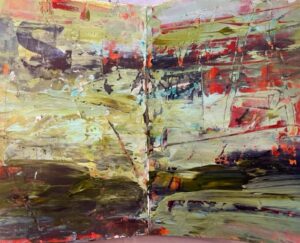
It came time to submit images for our upcoming show. I didn’t have any completed pieces and what if I never found my way to adding paint to collage (or collage to paint). So I submitted photos of two 12×12 inch paintings that were somewhat in the style I hoped to complete, although the work did not have one bit of collage in them.
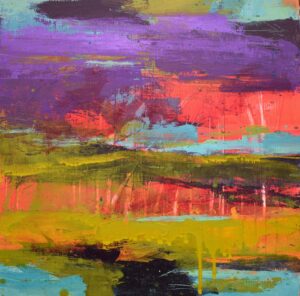
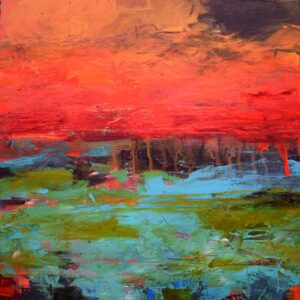
But the challenge was mine, no one else knew I was attempting to pull off this arduous (to me) task. The fear grew, and I became paralyzed. Until I decided to push through. The opportunity came in the form of spending two weeks in Palm Springs in late January. We had rented a modern condo with a large dining room table (that was my main criteria in choosing our rental). I loaded up 12 12×12 inch flat birch panels, three working journals, two big bags of acrylic paint, a gigantic bag of collage materials, and a satchel of art supplies. I claimed the table (and the kitchen bar, and the kitchen prep counter, and sometimes the floor) as my work space. We were in Palm Springs to celebrate Howard’s birthday and his retirement, so he was there to golf. I was there to paint and collage. It was a beautiful win/win situation.
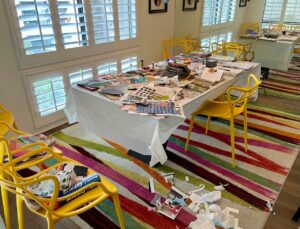

Daily, I worked in my journals.
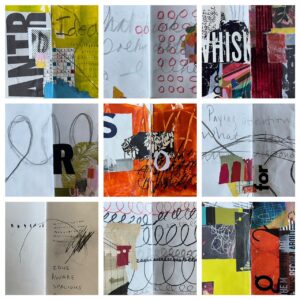

I glued down collage onto the 12 boards.
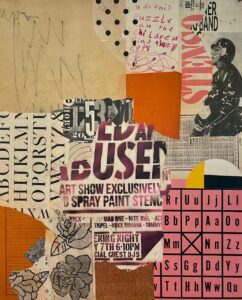
Then I sidetracked myself to create a fresh batch of painted collage papers (that process is worthy of an entire blog post!).
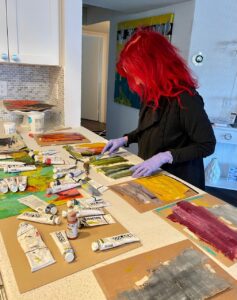

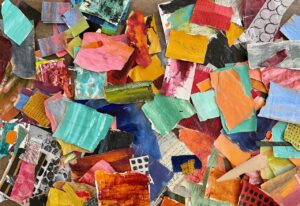
And then I did what I had been hesitant to do. I started combining paint and collage in any way I could think to do it. If I did too much painting, I just added more collage. Sometimes I painted too much on purpose and glued collage on top. Sometimes I painted over the collage, revealing tiny bits of the collage beneath the surface. I sanded, I scraped, I reapplied paint, and added more collage.
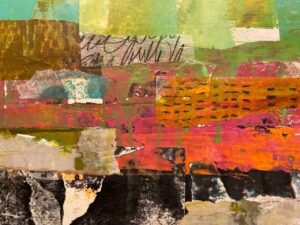
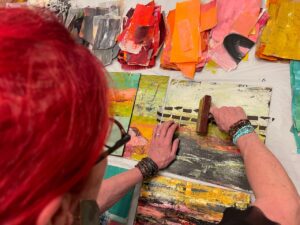
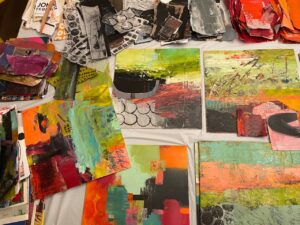

I started to find my rhythm and I was having fun.
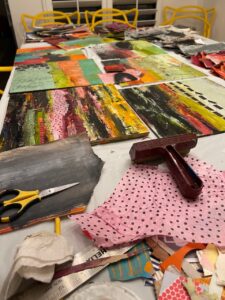
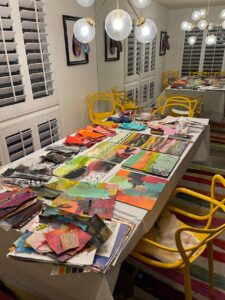

A body of work came together. I had started with the idea of creating six pieces for the show, and then it grew to nine. At the end of our two weeks in Palm Springs, I had twelve boards with potential. After we got home, I fine tuned a few of the panels and I had 12 that were show worthy – a beautiful grid.
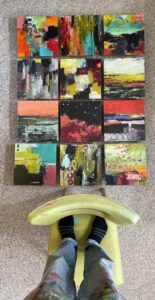
Here are the 12 that are in the show.

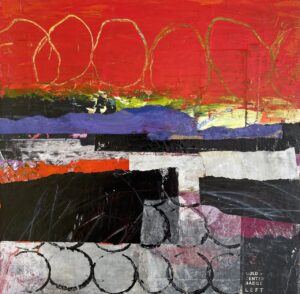




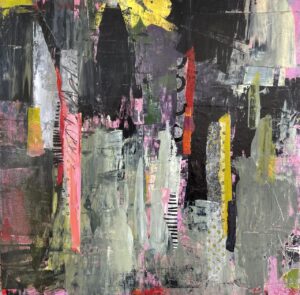



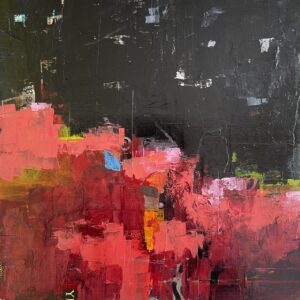
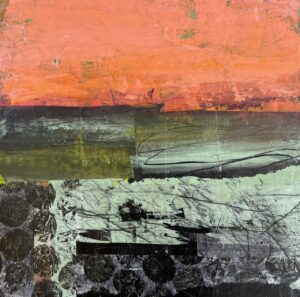
Traces opens tonight . . . . next up, my blog about the show.

